As part of last week's Enriching Scholarship events, I offered an introductory workshop on the subject of illustrations in early printed books. In brief, the participants of this session learned not only about how these images were created but also about how to identify the details of their production by examining actual books. For each book the following question was raised: are these illustrations woodcuts, engravings, or lithographs? To put it differently: what particularly technique was used? Is it relief, intaglio, or planography? We all had great fun!
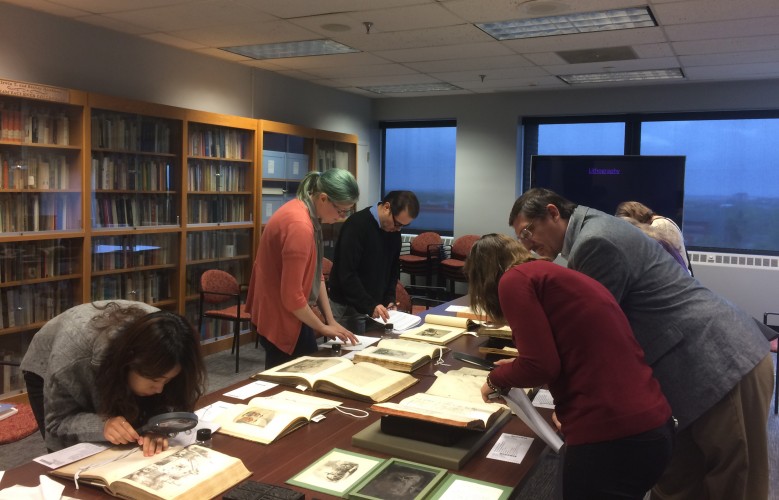
Participants in the workshop, "Identifying Early Illustration Processes in Rare Books - An Introduction".
Being able to identify early illustration processes is a tremendously useful skill for curators, librarians, collectors, and scholars who desire to learn how the materiality of books shapes the creation, reception and dissemination of ideas. Who is the original artist whose work we see in a copperplate engraving? Why is the printer risking so much capital in the production of a richly illustrated book? Are the artist and the woodcutter the same person? What is the relationship between the image and text? The answers to these and other similar questions teach us a lot about book history and, particularly, about the actual historical context in which these books were originally published.
Below are a few images from some of the rare books which, equipped with measure tapes and magnifying glasses, we had the opportunity to examine closely. A gentle warning: the persistent gloominess of their subject matter does not reflect a troubled state of mind but it is just a pure coincidence.
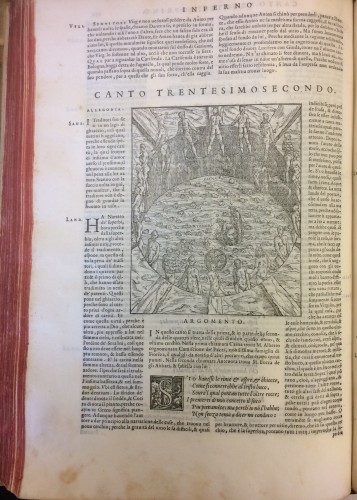
Woodcut. Dante con le spositione di Christoforo Landino, et di Alessandro Vellutello (Venice: Giovambattista, Marchiò Sessa, & fratelli, 1564)
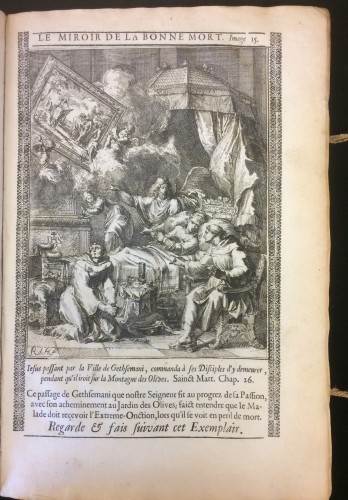
Engraving and woodcuts. David de la Vigne (ca. 1614-1684). Miroir de la bonne mort: tiré de la passion, et de la mort de notre Sauveur (Antwerp: 1665)
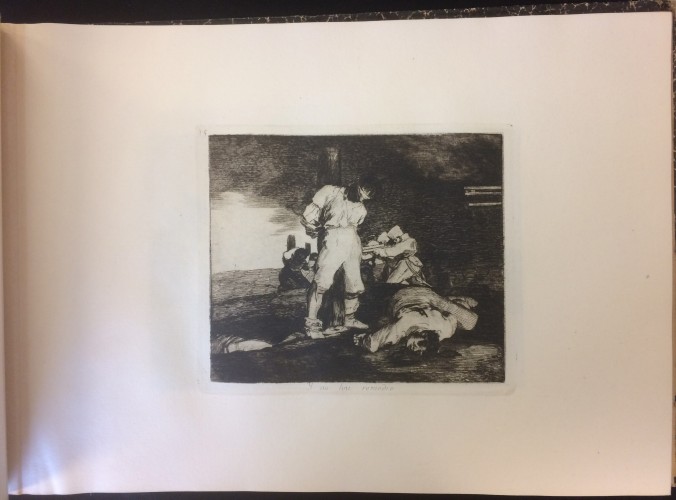
Aquatint. Francisco Goya (1746-1828). Los desastres de la guerra (Madrid: Academia de Bellas Artes de San Fernando, 1923)
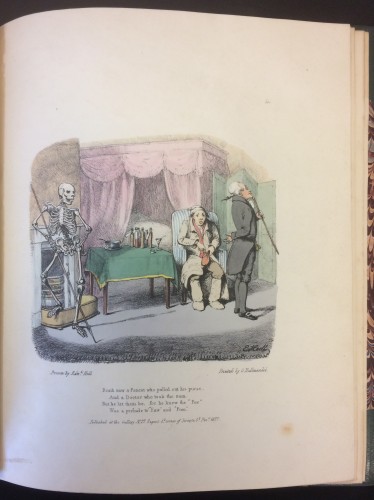
Colored Lithography. Edward Hull. Illustrations of Death's Ramble, from the "Whims & Oddities" of T. Hood esqr. (London: Published at the Gallery, printed by C. Hullmandel, 1827)